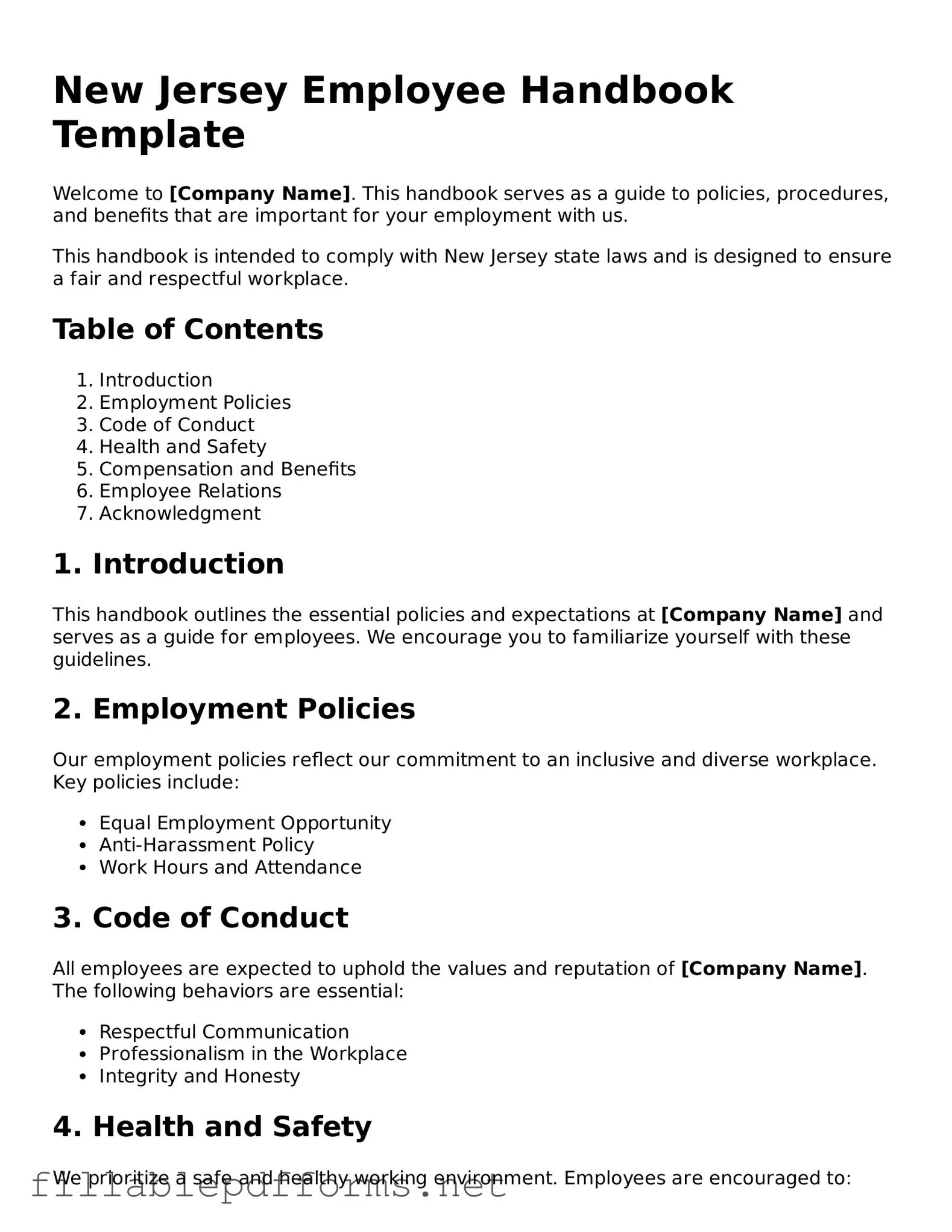Attorney-Verified Employee Handbook Form for New Jersey State
The New Jersey Employee Handbook form serves as a vital document that outlines the rights, responsibilities, and expectations of both employers and employees within the state. This form not only helps to establish clear workplace policies but also ensures compliance with state and federal laws. Understanding its significance can empower both parties to foster a respectful and productive work environment.
Launch Editor Here
